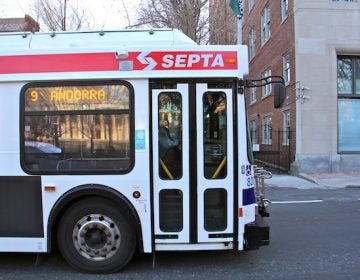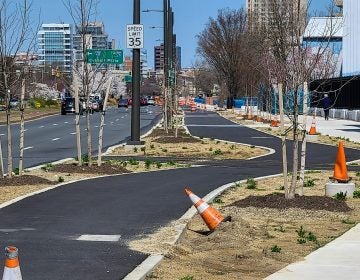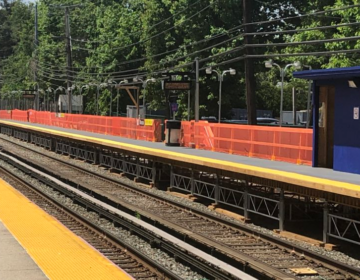Our Morning Commute: Multimodal living with kids in Philadelphia
For the last seven years, my children and I have primarily moved around Philadelphia by bike, foot, and public transportation
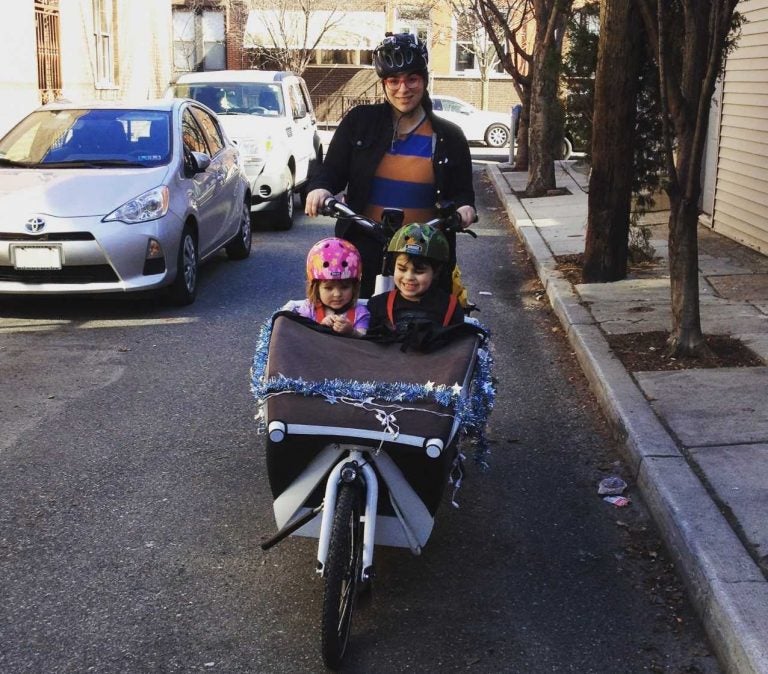
Dena Driscoll and her children try to navigate their way to summer camp, blocked by sidewalk parking at 12th Street and Washington Avenue. (Dena Driscoll)
This essay originally appeared on PlanPhilly.
—
For the last seven years, my children and I have primarily moved around Philadelphia by bike, foot, and public transportation. Though my children are at ease with this life, there are, more often than not, times when I feel overwhelmed by how our city does not prioritize families. Commuting to work and school on foot, by bike, and via public transit is not a choice — it is the only option for us. Like many households in Philadelphia, we own only one car, and my husband, who works 20 miles from our home, uses it daily to get there.
During the last few years of our morning commute, we have learned some lessons and developed tricks to make it easier. But I would also like to see the city tackle the problems I list below, to make it doable for families to commute multimodally and enjoy it.
Public transit
Philadelphia has a wonderful public transit system. We have a comprehensive network of buses, subways and trolleys. But SEPTA could also use more customers taking advantage of it. Many families already use SEPTA, but it is not easy for them. Parents of young children are asked to stow their strollers on buses. Elevators to the subways are rare at stations and often are broken. Most bus stops do not provide seating. Moreover, after age 4, children are charged full fare on SEPTA. To put that into perspective, making a single round trip without a transfer costs my children and me $12; if we need to transfer, the $1 penalty can bring it up to $18 for a round trip. We also need three Key cards, as they cannot be “double-tapped.”
Like most children, these problems don’t cross my kids’ minds. They love SEPTA — they have loved trains, buses and trolleys since before they could speak, and they have ridden on them just as long. My children love staring out the windows at the tunnels below ground and the buildings and people above. From years of riding SEPTA, they know the kindness of others. I appreciate the many “SEPTA aunties” who over the years held my then-baby daughter as I got my son situated on buses, and the folks who have given up seats or who have given a helping hand as my kids stepped down from the bus. My children also love the operators, who might as well be superheroes. We are grateful for the way they greet us kindly each day and how they make our commute safer than any other form of travel.
Walking
We are all, at some point, pedestrians. As we should be, when we have neighborhood upon neighborhood of walkable streets. Maybe you are pedestrian after you park your car, or maybe it is your only form of transportation. Perhaps you push a stroller or roll your wheelchair down our narrow sidewalks. We all do it in some way. My kids delight in rolling down our sidewalks on their scooters. But many sidewalks in our neighborhoods and even in Center City are long past their reasonable life spans. Cars are often found parked on them, and many sidewalks are so broken up that they are impossible to pass down safely with a stroller, a scooter, or a wheelchair.
Walking is also made difficult by the cars that block curb cuts or park to the corner, eliminating safe sight lines. I live in South Philadelphia, where the “South Philly Roll/Slide” makes it not only unsafe for my family to cross the street, but deadly at times for some children.
My kids have gotten used to me yelling at cars to give us space as we use the crosswalk.They will throw up their hands and yell “Stop!” at drivers. However, it doesn’t bother them too much, as they love to propel themselves along on foot. From the moment they could walk, they have hustled down the sidewalks of our neighborhoods to the parks they love so dearly. They run into friends on the sidewalks, talk to our neighbors, and stare at window cats. They use our sidewalks like jungle gyms, flipping themselves on bike racks and using curbs as balance beams. They’re keen on stopping at their favorite treat shops for soft pretzels or gelato. On our morning commute, we stop in at public spaces to dip our feet in the fountains in the summer or to swing on swings in the winter. On foot, we can explore so much: Even if we get off the subway at City Hall and only have three blocks to preschool, there is at least one place per block we need to inspect or discover.
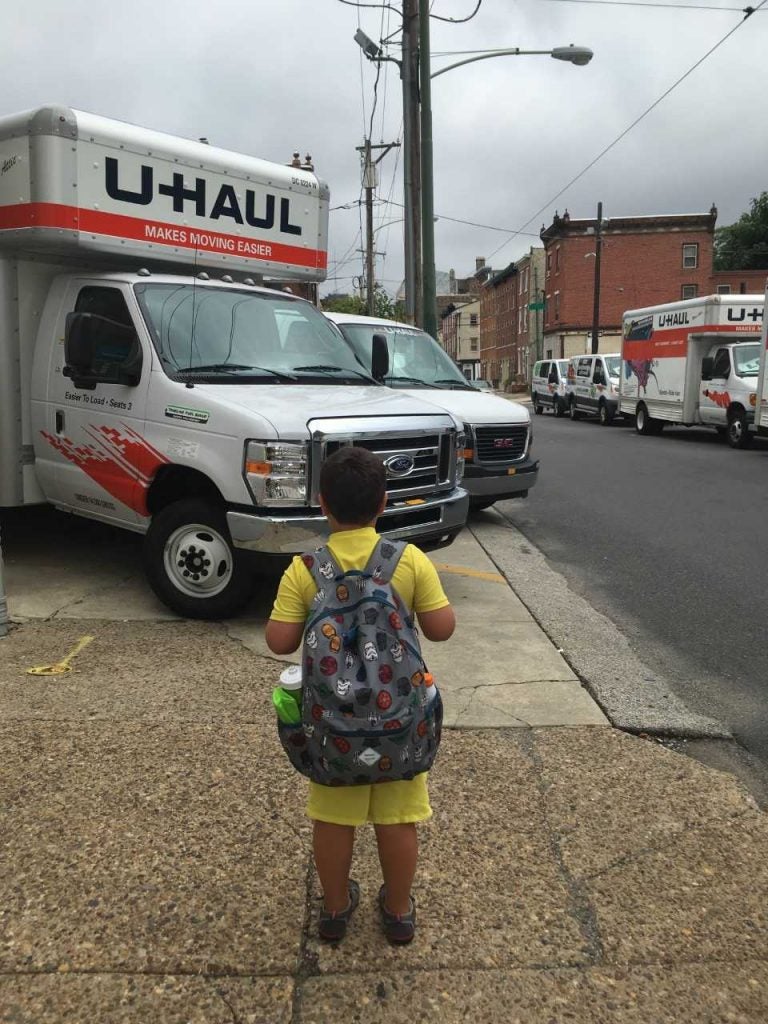
Biking
In Philadelphia, this is complicated. If you feel safe biking, it is a wonderful, cheap and convenient form of transportation, often quicker than walking, cars or transit here. Our four-season weather is mostly mild, and the city is generally flat, making it an ideal place to bike. However, our city government over the years, and particularly recently, has chosen not to provide safe infrastructure for families who bike. Bike lanes remain unprotected, and painted lines are faded. Neighborhood bikeways are incomplete, cars continue to park in bike lanes, and our lane network itself is disjointed. There are not many places for children to learn how to bike. Center City District parks, for instance, do not allow children to bike in them.
Without a doubt, biking in Philadelphia can still be a treat, even if it is problematic for families. Though I do not feel 100 percent safe every day riding with my children, unlike many drivers — who have told me! — I do not think I am putting my children’s lives in constant danger. I do know that by biking I am setting a healthy example of transportation. Riding a bike in itself isn’t the danger, it’s the cars. To create a safer environment for myself, I legally take the lane — riding in the middle, allowing no cars to pass me — and use bike lanes when available.
By far, my children’s favorite form of transportation is my cargo bike. The pleasures of both transit and walking are found there. We can stop and talk to friends, but we also discover so many neighborhood pleasures between our house and our schools and work. And my family isn’t alone — dozens of families have enjoyed biking in Philadelphia for years. It’s also a healthy form of transportation for busy parents everywhere.
Some of these challenges seem daunting, but I promise you, I love living this multimodal-transportation life with my children in our city. If Philadelphia is serious about increasing families’ ability to actively commute, it needs to make the following steps a priority:
- Eliminate transit fees for children 12 and under.
- Enforce the laws, allowing no cars to park on sidewalks and at curb cuts.
- Build a protected bike-lane network that takes people where they need to go to work, shop, and go to school.
WHYY is your source for fact-based, in-depth journalism and information. As a nonprofit organization, we rely on financial support from readers like you. Please give today.





